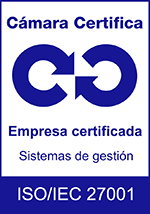Translated by: Laragon. Author: Terry Mathis.
Start planning for new security technologies by determining which ones are best suited to your current and future needs.
A year ago, I wrote about updating security programs and processes to meet the challenges of Industry 4.0 (“Security 4.0,” April 2018). I mentioned the technologies that, in part, are driving this new industrial revolution. Now I would like to challenge your organization to at least start planning for these new technologies by formulating a projection of which ones should be adopted and in what order.
Obviously, a plan of this type will have to be flexible, since technologies are progressing and its costs are dropping very quickly, but such a plan can help provide a potential roadmap for navigating through the changes that Industry 4.0 will inevitably bring. This is not a list of items specific, but the types of elements and their potential uses. Many of These will revolutionize current security efforts and open up new opportunities to possibilities that we could not achieve without them.
Consider the following categories of new technologies and prioritize them by contribution potential to your security needs.
MICROLEARNING
In addition to the computer-based training, very little progress has been made since the school days of classroom training. But now we have microlearning: training modules based on devices that use the latest computer science and and other advancements, and provide follow-up training, easy access to reporting and tracking the progress of performance training. Training can be provided to populations with logistical difficulties, unlike the instructor-led classroom training.
In addition, it is not only for security, but can be applied to virtually any need for training. If training needs to be updated, this may be the right place for you. first priority.
WEARABLES
The devices that accompany the worker can track anything from the rhythm heart rate and calories burned to location and sudden movement. Falls can be detected and reacted to in real time. EMS can be called in the event of an accident. The following can be warned workers if they are entering areas with new or unusual hazards. The Safety-related behaviors of workers may include monitored with pinpoint accuracy and immediate feedback mechanisms.
If your employees are at high risk of falling, consider this from the beginning.
MOBILE COMMUNICATIONS
In a world already full of tablets and cell phones, it makes sense to use them for more than interpersonal communication. Training can be provided on them and they can to disseminate corporate culture and best practices, the manuals, the security updates can be made available at all times. The reports of incidents can be delivered, surveys and polls can be conducted and workers may be asked to conduct training sessions for their employees. stretching or bending, observations, audits or take breaks.
Organizational leaders can send messages of strategy and encouragement that will be received by the entire and be in their voice rather than filtering down through the workforce levels. (where it is often distorted). You can reach workers and drivers alone with training and information at no cost to the company. travel and loss of work time. Emergencies can be addressed with faster and lessons learned from incidents can be communicated more quickly and in a timely manner.
About the author of this publication: Terry Mathis is Founder and CEO of ProAct Safety.
Laragon offers the best technological solutions to pilot these processes, working with global market leaders in EHS and Operational Risk Management.
If you would like to know more about our experiences with clients in this area, please contact us by calling us at: +34912547019 or by email: [email protected].




